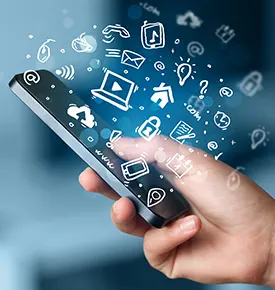There are many connected objects that can improve our daily lives. For example, a fitness tracker can help us to stay active and healthy, while a smart thermostat can help us to save money on our energy bills. In this article, we will look at some of the most popular connected objects and how they can benefit us.
The internet of things
, also known as the Internet of Everything, is the interconnectedness of physical objects and devices with the internet. This interconnectedness allows for data and information exchange between devices, and opens up new possibilities for how we interact with the world around us. has the potential to revolutionize our daily lives, making them more efficient and convenient. For example, imagine being able to turn on your lights and appliances with your voice, or have your fridge automatically order groceries when it detects that you're running low. The possibilities are endless, and the internet of things is already starting to make its way into our homes and workplaces.
The quantified self
is the idea that we can use technology to track and improve our daily lives. There are a number of connected devices that can help us do this, from fitness trackers to smartwatches.
There are many benefits to using these devices. For one, they can help us become more aware of our daily habits and patterns. This can be useful in making small changes that can lead to big improvements in our health and well-being.
Additionally, these devices can help us track our progress over time. This is especially useful for those who are trying to make lifestyle changes, such as eating healthier or exercising more. By seeing our progress, we can stay motivated and on track.
Finally, these devices can help us connect with others who are also trying to improve their lives. There are a number of online communities dedicated to helping people reach their health and fitness goals. By sharing our experiences and progress, we can help each other stay on track and motivated.
The connected home
The internet of things, or the connected home, is a term for the network of physical objects—devices, vehicles, buildings and other items embedded with electronics, software, sensors, and network connectivity—that enables these objects to collect and exchange data. is an extension of our daily lives, and it’s becoming more and more commonplace.
In the home, connected objects can be used to control the temperature, lighting and security, and they can also help with tasks like laundry and grocery shopping. Connected devices can also make it easier to stay connected with loved ones, whether it’s through a video call or a shared calendar.
is not only convenient, but it can also help to save energy and money. For example, a connected thermostat can learn your schedule and adjust the temperature accordingly, so you’re not heating or cooling an empty house.
There are a few things to keep in mind when it comes to the connected home. First, it’s important to make sure that your devices are compatible with each other and that they’re all properly configured. Second, you need to be aware of the potential security risks associated with the connected home. Hackers could gain access to your devices and use them to spy on you or steal your personal information.
With a little care and attention, the connected home can be a great way to make your life easier and more efficient.
The connected car
A connected car is a vehicle equipped with Internet access, typically via Wi-Fi, and usually integrated with other wireless technologies such as Bluetooth. This allows occupants to stay connected to the Internet while on the road. Connected cars are also sometimes referred to as Internet cars, Internet-enabled cars, or smart cars.
Most connected cars use an embedded cellular modem to connect to the Internet, although some use a tethered connection, such as a smartphone. Data usage varies by car and by country, but a typical connected car will use 2 to 5 gigabytes (GB) of data per month.
Connected cars offer a number of features that can improve the driving experience and make life on the road easier. These features fall into three broad categories: infotainment, safety and security, and vehicle diagnostics.
Infotainment features include things like music streaming, hands-free calling, and turn-by-turn navigation. Safety and security features include things like automatic crash notification and stolen vehicle tracking. Vehicle diagnostics features include things like engine trouble codes and oil life monitoring.
Most connected cars also offer some form of in-car app store, which allows occupants to download and use apps that are specifically designed for use in the car. These apps can range from games and entertainment apps to productivity apps and everything in between.
The connected car is still a relatively new phenomenon, but it is rapidly gaining traction. In the United States, for example, the number of connected cars is expected to grow from 15.5 million in 2015 to nearly 75 million by 2025. This growth is being driven by a number of factors, including the falling cost of connected car technology, the increasing availability of high-speed cellular networks, and the ever-expanding app ecosystem.
